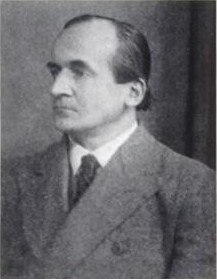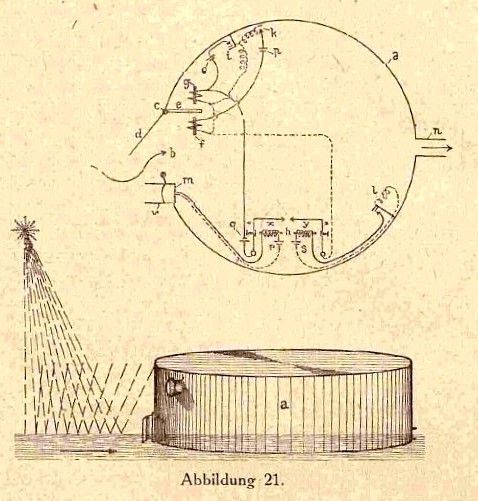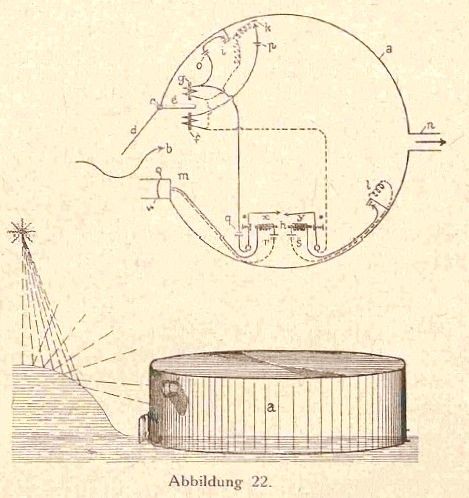
Lux' protozoon *
This device is a model of a unicellular animal: it consists of a short rubber cylinder with two slots (Fig. 98). According to the ideas of its inventor, it is anchored in a brook, half submerged in the water. The water in the "protozoon" is considered as the "food" it is in the process of digesting. If there is too much water in it (it is "overfed"), then the rubber cover distends and the lever, indicated by the broken line on the left, closes the lower contact at a and the small flap restricts the slot called "mouth"; in the case of too little water ("underfeeding") the slot is open wider because of the closing of the upper contact at a. This "protozoon" can even "learn" and "remember" according to a Pavlovian reflex process: if a bigwave dangerously distends the rubber cover, then the contact at b is also closed and the mouth is shut by the contactor actuated by the magnet c (unconditioned reflex), but, as the magnetization of c is preserved for a considerable time, if in the course of this time the photoelectric cell (whose circuit is not shown in full in the figure) perceives a big wave (by the glitter of the water!) it shuts the mouth in advance by means of the contactor d (conditioned reflex).
From Cybernetic Machines by L. Nemes, translated by I. Foldes (1969) (Hungarian original 1962).

* Lux, F.: Gehirn und Seele. (Brain and Soul) 1920.
Illustrations from Gehirn und Steele of which the above adaption developed from:

Photo-electric cell not activated by light as no wave to provide scattered light source.

Photo-electric cell now actived by scattered light from approaching wave.